Introduction
Agile software development has revolutionized the creation and delivery of software, transcending the boundaries of a mere methodology. It champions a transformative mindset that prioritizes individuals, interactions, and customer collaboration, while embracing the inevitability of change. Agile breaks down software projects into manageable iterations known as sprints, enabling consistent evaluation, refinement, and course correction.
This iterative process fosters a harmonious alliance between developers and business stakeholders, ensuring that the primary measure of progress is working software. In the current landscape of software development, Agile methodologies have become indispensable, offering adaptability, teamwork, and swift response to change. From setting new standards in banking software to transforming business models, Agile principles guide organizations towards efficiency and success.
Despite challenges, Agile's commitment to rapid iterations and collaboration continues to offer a compelling alternative to traditional methodologies. In this article, we delve into the essence of Agile software development, exploring its impact, principles, and frameworks, and how it drives the efficiency and success of modern software projects.
What is Agile Methodology?
Agile software development transcends the boundaries of a mere methodology; it is fundamentally a transformative mindset that has thoroughly redefined the creation and delivery of software. At its core, Agile champions a set of values and principles that highlights the significance of individuals, interactions, and customer collaboration, while embracing the inevitability of change. This paradigm shift came about as an antidote to the constraints posed by traditional, linear development methodologies such as the Waterfall model.
These conventional methods were notorious for protracted development cycles, rigid planning, and a pronounced lack of agility in addressing evolving requirements.
The Agile approach breaks software projects into manageable, bite-sized iterations known as sprints. Throughout these sprints, developers tackle smaller segments of the project, enabling consistent evaluation, refinement, and course correction. This iterative process is not just about maintaining a steady pace; it's about fostering a harmonious alliance between developers and business stakeholders.
By collaborating on a daily basis and remaining open to changes, even at advanced stages of the project, Agile ensures that the primary measure of progress is working software, as stated in the Manifesto for Agile Software Development.
In the current landscape of software development, the imperative for adaptability, teamwork, and swift response to change has rendered Agile methodologies indispensable. Whether it's the monumental task of setting a new standard in banking software, like M&T Bank's initiative to establish Clean Code practices across their development team, or the innovative transformation undertaken by a company transitioning from an outstaffing model to an outsourcing service provider, Agile principles are at the forefront, guiding organizations towards efficiency and success.
Agile's impact is further reinforced by statistics that highlight its adoption and success rates. Despite challenges such as developer burnout, the transition to remote work environments, and the emergence of AI, Agile's commitment to rapid iterations and collaboration continues to offer a stark contrast and a compelling alternative to the more rigid 'waterfall' approach. The 'State of Agile' survey from Digital.ai underscores Agile's popularity in smaller firms, while also acknowledging the struggle it faces in gaining traction within larger enterprises.
Through this article, we delve into the essence of Agile software development, exploring how it has revolutionized the field and continues to be a critical factor in the efficiency and success of modern software projects.
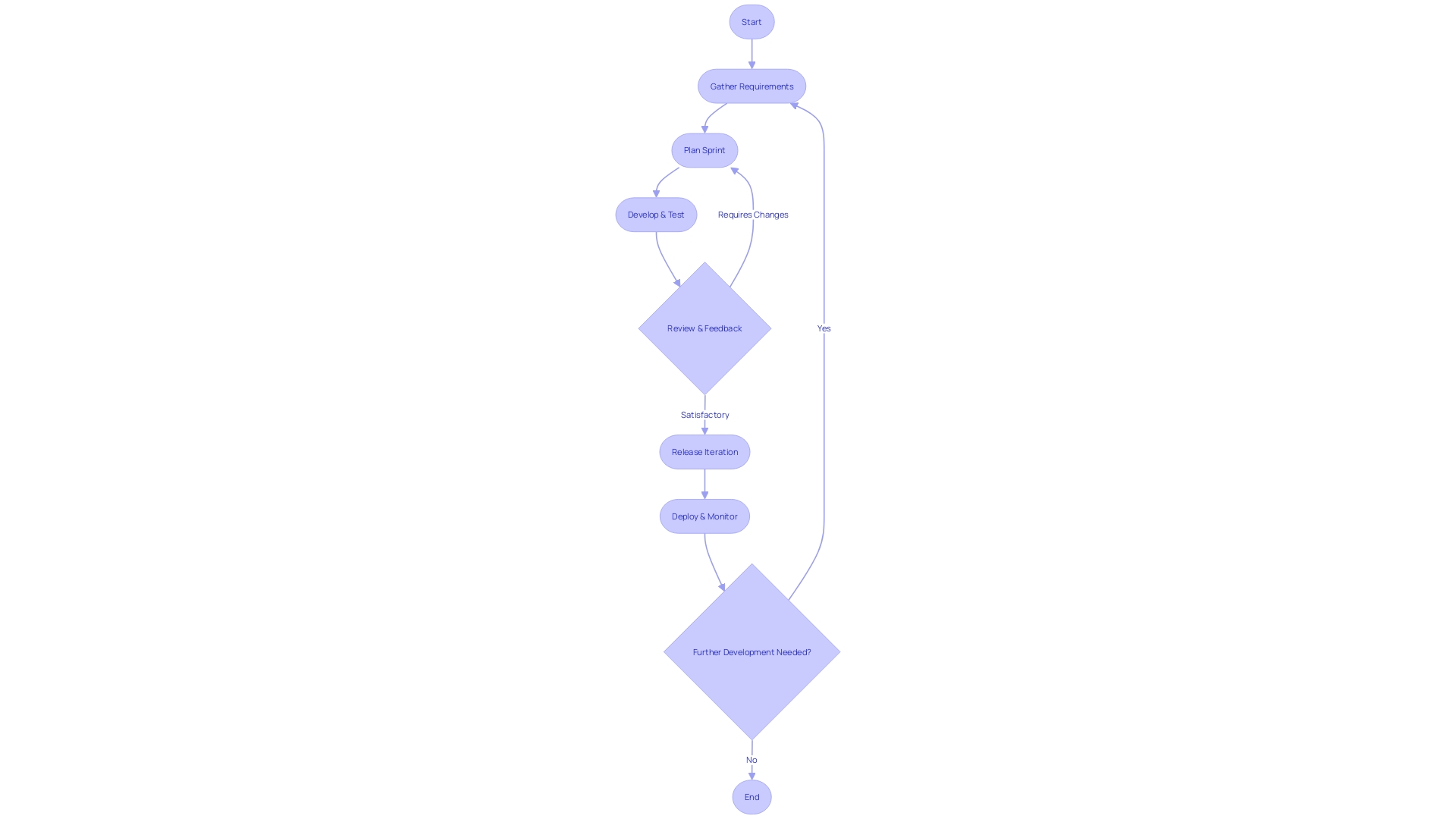
The Agile Manifesto: Four Core Values
The Agile Manifesto, an influential framework established in 2001, revolutionized software development with its preference for flexibility over rigid planning. It champions prioritizing human interactions and collaborative problem-solving over strict adherence to tools and processes. The heart of agile lies in valuing functional software that meets user needs above exhaustive documentation.
This approach encourages close collaboration with clients throughout the project's life cycle instead of rigidly negotiating terms upfront. Lastly, it embraces adaptability, allowing teams to pivot in response to changes rather than being bound to a fixed plan.
This dynamic approach to software development mirrors the construction of the Hoover Dam in the 1930s, where a clear vision and the empowerment of skilled individuals drove the project to success with minimal top-down interference. Agile methods encourage similar empowerment within software teams. For instance, in the case of Paul Keen's transformation of a company's business model, agile principles like self-organization and iterative progress were likely integral to navigating such a significant shift.
Agile's iterative sprints allow teams to continuously evaluate and improve their strategies, resulting in not just speed, but agility—a nuanced capability to adapt and respond swiftly to change. This is evident in the tech industry's current landscape, where the demand for agility is more pronounced amidst challenges like developer burnout and the rise of AI.
The Agile Manifesto's relevance extends beyond professional settings; it can shape personal approaches to work and life, fostering a culture of integrity and well-being over mere certification. Despite obstacles, agile methodology has demonstrated its effectiveness, with studies revealing that true agility leads to significant performance improvements, including higher productivity, faster time to market, and increased financial returns.
It's imperative to recognize that agility is not merely a set of practices but a mindset that permeates the culture and operations of a team or organization. As the tech landscape evolves, the principles of the Agile Manifesto continue to guide successful, responsive, and collaborative software development, particularly for nimble frameworks like Vue.js.
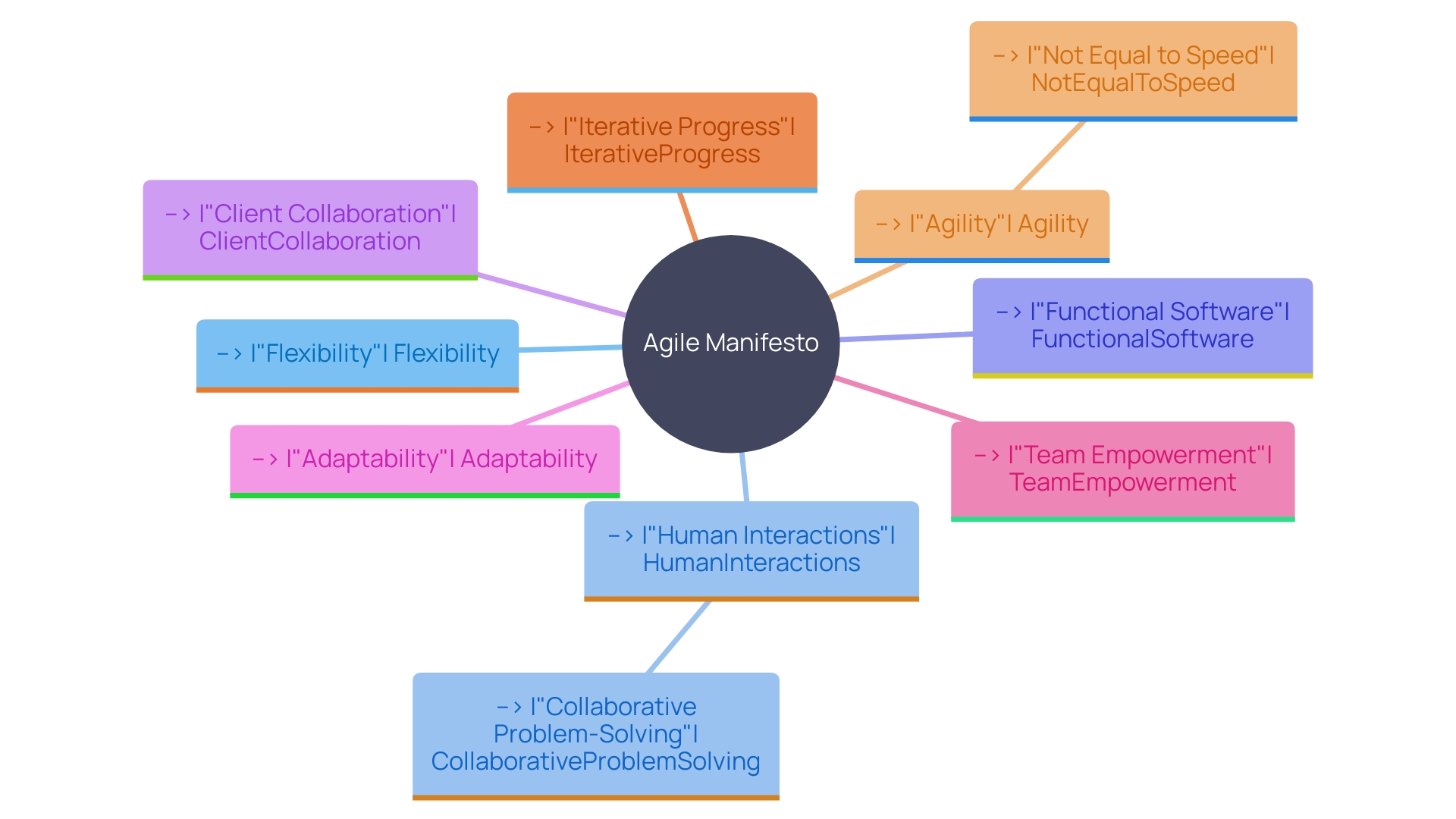
The 12 Principles of Agile Methodology
Agile software development has profoundly transformed the way digital solutions are crafted and delivered, marking a departure from the cumbersome and rigid processes of the past. The methodology, which first emerged in 2001, is built on 12 fundamental principles that collectively promote iterative development, customer-centricity, and a collaborative ethos amongst cross-functional teams. These principles guide teams to break large projects into smaller, more manageable increments known as 'sprints', with each sprint followed by a period of reflection and potential strategy adjustment.
The aim is to foster environments where software is developed in a responsive and adaptive manner, ensuring the final product aligns closely with user needs and business goals.
An Agile project is characterized by its iterative cycles, where development is divided into sprints that typically span weeks or months. During these sprints, daily stand-up meetings play a crucial role in monitoring progress, allowing for adjustments to be made swiftly in response to feedback or changing requirements. This stands in sharp contrast to the traditional 'waterfall' approach, which often involves extensive upfront planning and linear execution, leaving little room for mid-course corrections.
Agile's emphasis on 'working software as the primary measure of progress' is a testament to its practical nature—a stark contrast to merely adhering to a plan or schedule. The Agile Manifesto, the foundational document of this methodology, highlights the value of individuals and interactions, working software, customer collaboration, and responding to change over strict adherence to set processes and tools.
Despite its widespread adoption, Agile faces challenges, particularly in larger organizations and amidst the tech industry's evolving landscape, which includes shifts in working environments and the emergence of AI. Nevertheless, Agile remains a preferred approach, particularly among smaller firms, for its ability to accommodate rapid iteration and its openness to embracing changes, even late in the development process, thereby enhancing the likelihood of a project's success and aligning development efforts with the dynamic nature of the software industry.
Key Frameworks in Agile Methodology
Agile methodology, an approach first introduced in 2001, has revolutionized software development with its emphasis on adaptability, iterative progress, and collaboration. Unlike traditional 'waterfall' methods that progress linearly, Agile breaks down projects into manageable 'sprints,' facilitating frequent reassessments and adjustments. Agile functions according to the 12 principles set out in the Manifesto for Agile Software Development, with one key tenet being that 'working software is the primary measure of progress.'
This approach aligns with the philosophy behind the construction of the Hoover Dam, an iconic symbol of American engineering. Despite the Great Depression, the dam was completed two years ahead of schedule, standing as a testament to the power of trust, delegation, and shared responsibility in the face of formidable challenges. In today's software development landscape, Agile and its frameworks like Scrum and Kanban continue to offer flexible pathways through which teams can navigate complex projects, adapt to change, and deliver value to customers.
Incorporating a cross-functional approach, Agile encourages diverse teams to work cohesively, leveraging a broad spectrum of skills to innovate and solve problems. This method has facilitated a shift from top-down management to empowering those closest to the work, fostering a culture of accountability and continuous improvement. As the tech industry evolves, with challenges like developer burnout and the integration of AI, Agile remains a robust methodology, enabling teams to respond swiftly and effectively to new demands.
The success of Agile is evidenced by its widespread adoption and the ongoing transformation it brings to project management practices.

How Agile Projects Work: Sprints and Iterations
Agile methodologies, such as Scrum, have redefined project management, emphasizing flexibility, collaboration, and customer engagement. Unlike traditional approaches with their rigid sequences and inflexible targets, Agile welcomes evolving project demands and market trends, allowing teams to pivot swiftly and efficiently.
At the heart of Agile lies the concept of iterative development. Each cycle, known as a sprint, encompasses planning, execution, and assessment, typically spanning a few weeks. Agile's iterative nature facilitates incremental advancement of the project, with each sprint building upon the last.
This structure promotes a culture of continuous improvement and adaptation, resonating with the Agile Manifesto's emphasis on working software and customer collaboration.
A compelling example of Agile in action is Bosch's development of their solid oxide fuel cell (SOFC) system. Supported by a digital twin, the SOFC system exemplifies Agile's capacity to optimize performance and costs throughout the product's lifecycle, demonstrating how even complex, large-scale systems can benefit from Agile principles.
Moreover, Agile's iterative approach is not just about product evolution but also about strategic foresight. Some organizations leverage techniques like Monte Carlo Simulations to predict feature completion and manage deliverables within timelines. This forward-thinking tactic is particularly beneficial for products requiring on-premise deployment, where frequent updates may not be feasible due to their critical infrastructure role.
The Agile philosophy transcends the confines of project management and is equally transformative in software development. It's a mindset shift from the traditional Waterfall model, which often led to protracted development times and an inability to adapt to changing requirements. Agile development focuses on delivering functional software in manageable increments, ensuring regular feedback and enabling teams to refine and improve with each iteration.
In summary, the essence of Agile lies in its iterative sprints, providing a framework for teams to create, test, and refine continuously, ensuring the delivery of high-quality, responsive software that meets the ever-changing needs of users and the market.
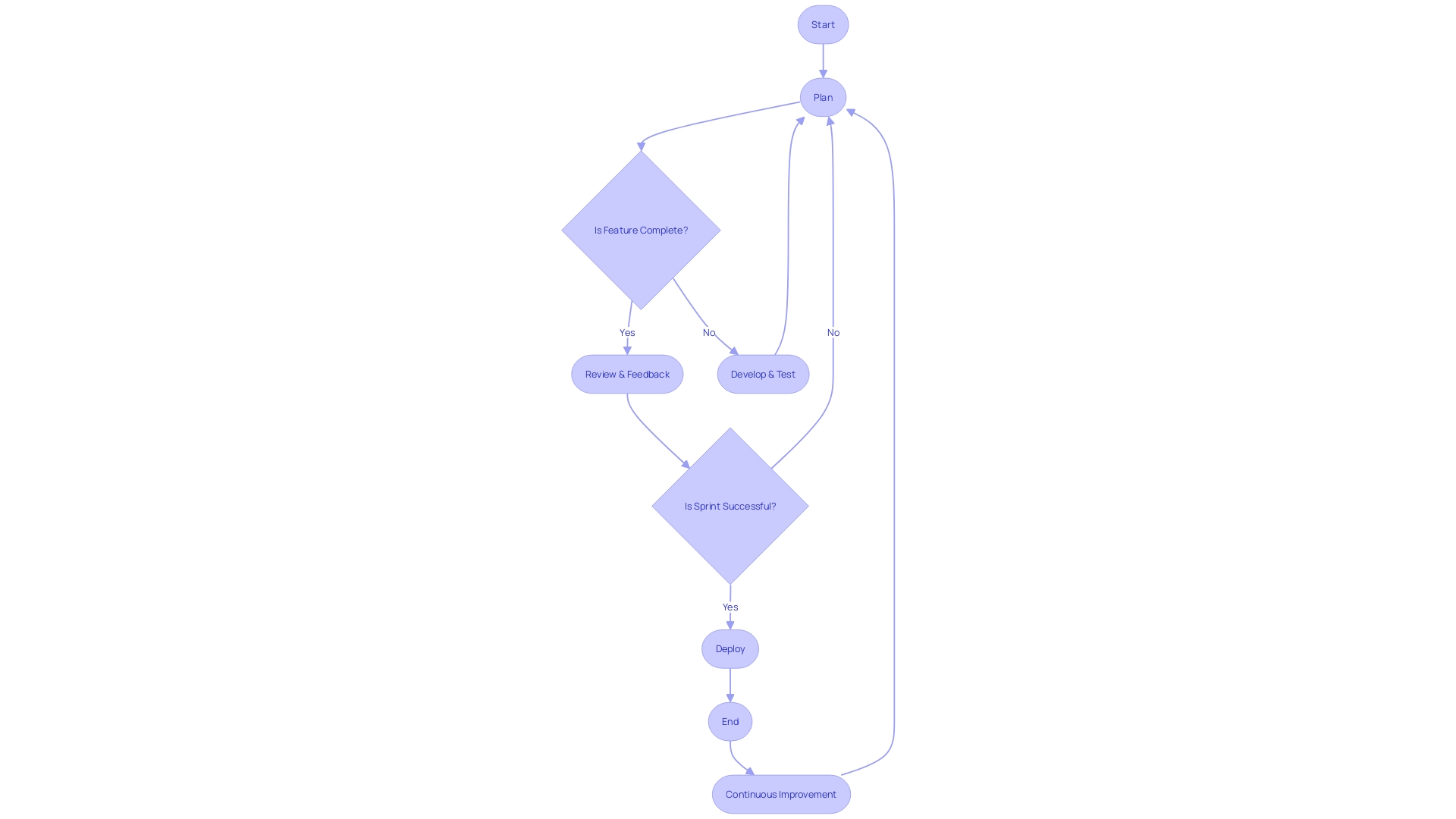
Benefits of Using Agile Methodology
Agile software development transcends a mere process; it embodies a revolutionary mindset that has significantly altered the landscape of software creation and delivery. Let's explore the Agile principles, their manifold benefits, and the impetus they provide for contemporary software endeavors. Central to Agile is a set of guiding principles and values that elevate the importance of human interactions, functional software, client cooperation, and adaptability to changes.
Born out of the constraints imposed by traditional, sequential development methodologies like the Waterfall model, Agile was developed to mitigate prolonged development cycles, rigid planning, and an inability to pivot with evolving requirements.
Iterative Development: The Agile framework dismantles projects into succinct, manageable iterations known as sprints. This granular approach allows developers to concentrate on discrete segments of the project, fostering an environment conducive to regular evaluation and necessary adjustments.
In the dynamic realm of software development, Agile's emphasis on flexibility, collaboration, and swift adaptation is paramount. By championing these principles, Agile methodologies have paved the way for a transformative movement in the creation and delivery of software, ensuring that teams can efficiently meet business needs while remaining receptive to changes.
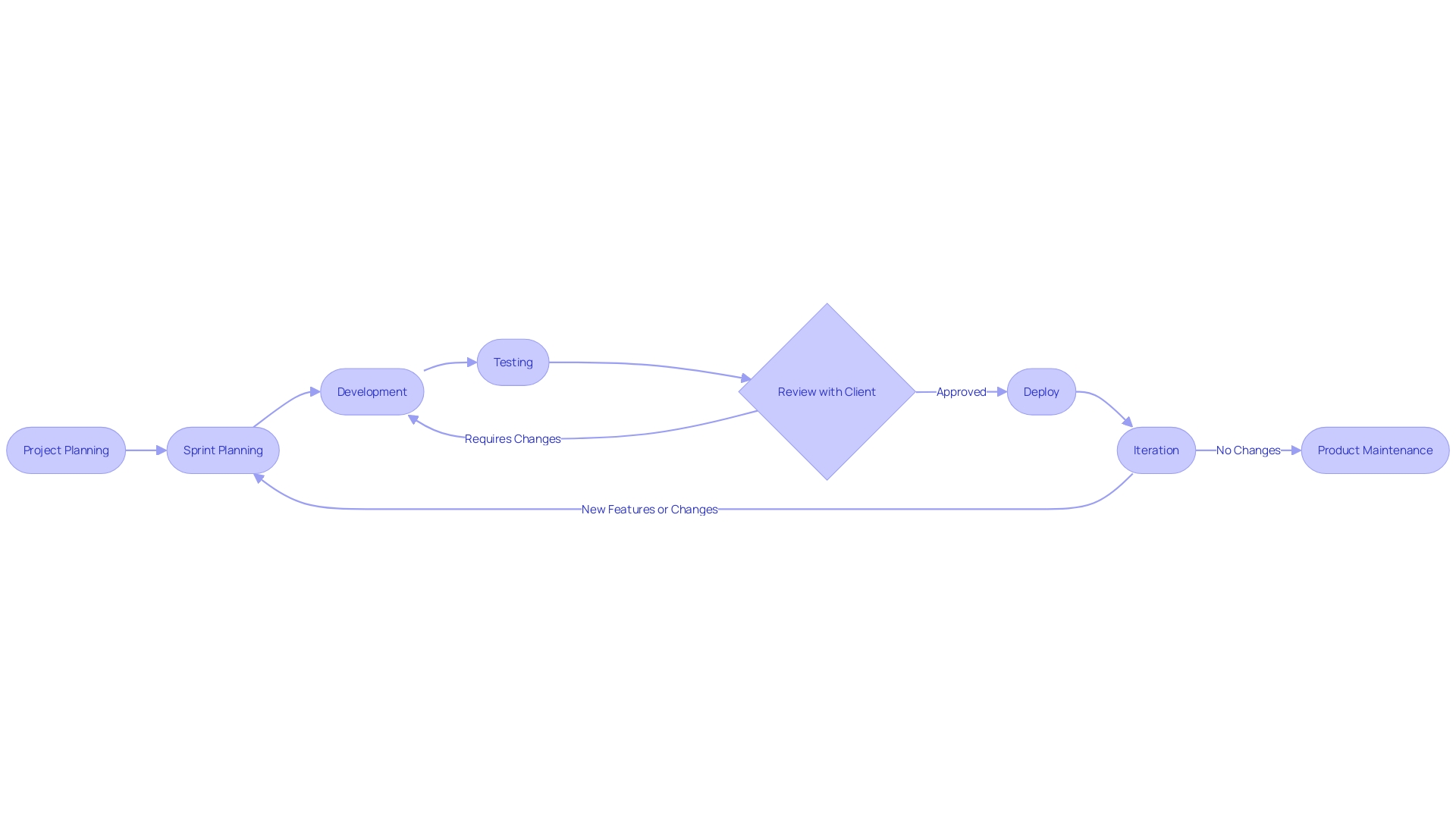
Implementing Agile in Your Projects
Agile methodology isn't just about moving quickly; it's about embracing adaptability and flexibility to deliver superior results. This iterative approach has revolutionized the software development landscape, particularly in fields demanding continuous refinement, like Vue.js development.
The transformation to Agile entails creating cross-functional teams that work in dynamic phases, known as sprints, to iteratively improve processes and results. After each sprint, a retrospective allows the team to reflect on what could be improved, adjusting strategies for subsequent cycles. This continuous improvement culture is perfectly illustrated by the experience at Nets, a digital payment solutions provider.
They faced the challenge of making technical data accessible and engaging. By reimagining data presentation, they not only enhanced user engagement but also improved the onboarding process for new team members.
Real-world outcomes support this approach. The CHAOS Report, a study examining software project quality, categorizes only 30% of projects as successful, with 50% challenged and 20% failing. Agile's flexibility may offer a remedy to this issue by allowing for quick adaptation to change, potentially increasing the success rate.
Agile's core values, as outlined in the Agile Manifesto, prioritize individuals and interactions, working solutions, collaboration, and responsiveness to change. Emphasizing these values can lead to more effective project management and better end products, as Agile methodologies like Scrum focus on customer-centricity and collaboration.
The industry's slow progress in improving software project outcomes over the past two decades, with no significant change reported in the CHAOS study, underscores the urgency for methodologies that can navigate the complex and evolving landscape of software development.
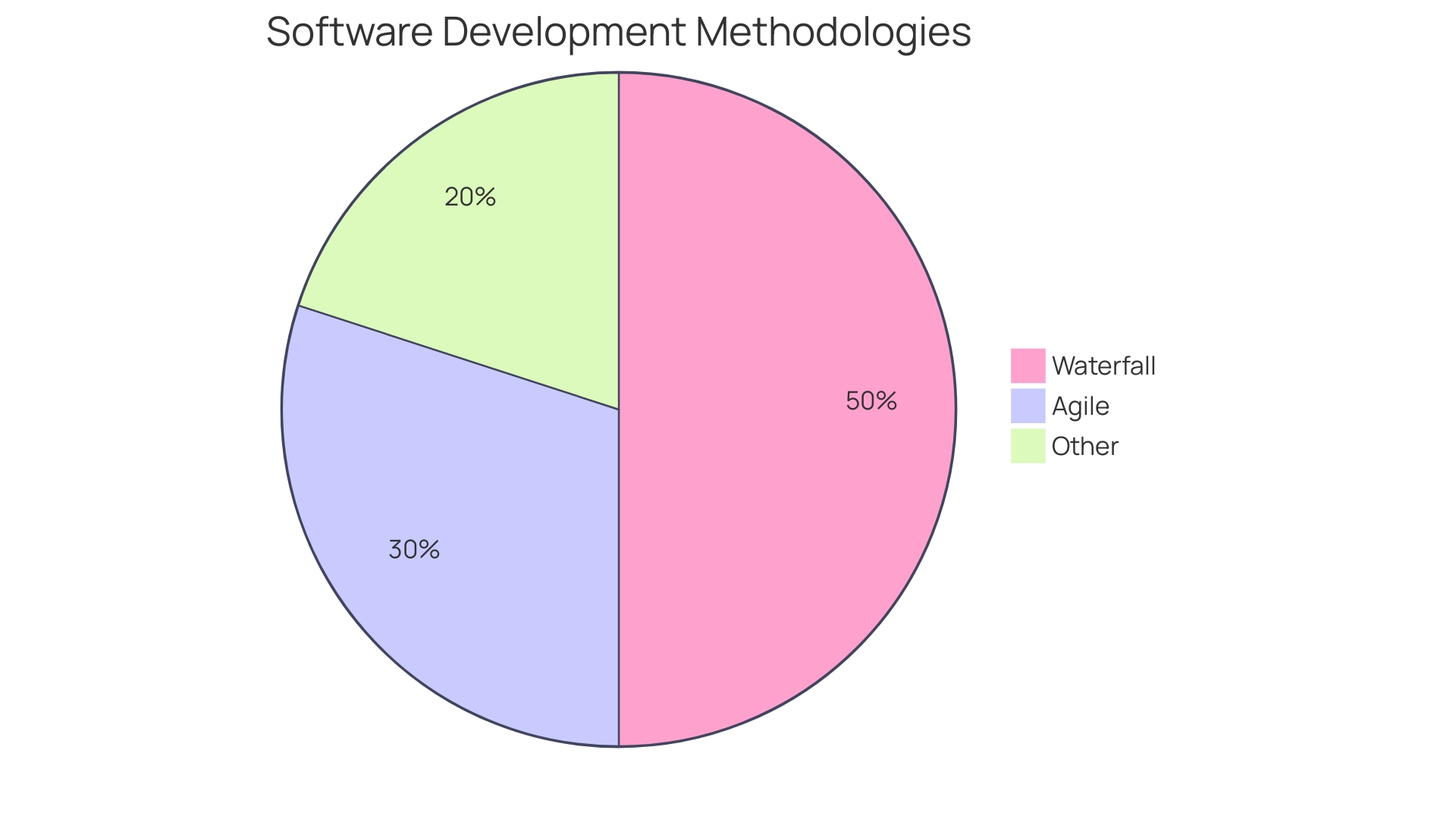
Common Practices in Agile Projects
Agile development principles and practices, such as daily stand-up meetings, backlog grooming, sprint planning, and retrospectives, are more than just rituals; they are the gears that keep software teams in sync and projects on track. Daily stand-ups offer a platform for team members to share progress, identify potential roadblocks, and realign based on the most recent information. Backlog grooming ensures that the project's to-do list is relevant, prioritized, and understood by everyone involved.
Through sprint planning, teams commit to deliverables over short, focused periods, enabling quicker turnaround times and frequent reassessment of priorities. Retrospectives provide a space for reflection and continuous improvement, vital for teams to evolve and enhance their workflow.
One real-world illustration of Agile's adaptability is the use of Monte Carlo Simulations for release planning in on-premise software products. These simulations allow for better forecasting of feature completion and help synchronize releases with other products, even in industries where updates occur less frequently due to critical infrastructure concerns.
Statistics show the significant impact of Agile: introduced in 2001, Agile aims to expedite software delivery by breaking down projects into smaller, manageable sprints, with progress reviewed in daily stand-up meetings. This approach aligns with the Agile Manifesto principle that 'working software is the primary measure of progress,' contrasting sharply with the previously dominant waterfall model.
Moreover, meetings are a linchpin in software engineering. As per insights, an overwhelming number of meetings take place daily, yet only 30% are deemed productive. Effective Agile meetings are succinct, outcome-focused, and time-optimized, ensuring that they drive the project forward without becoming a drain on time and resources.
Through thoughtful facilitation and a focus on actionable outcomes, Agile meetings can inspire and yield tangible results, helping teams to quickly adapt and continually deliver value to their customers.
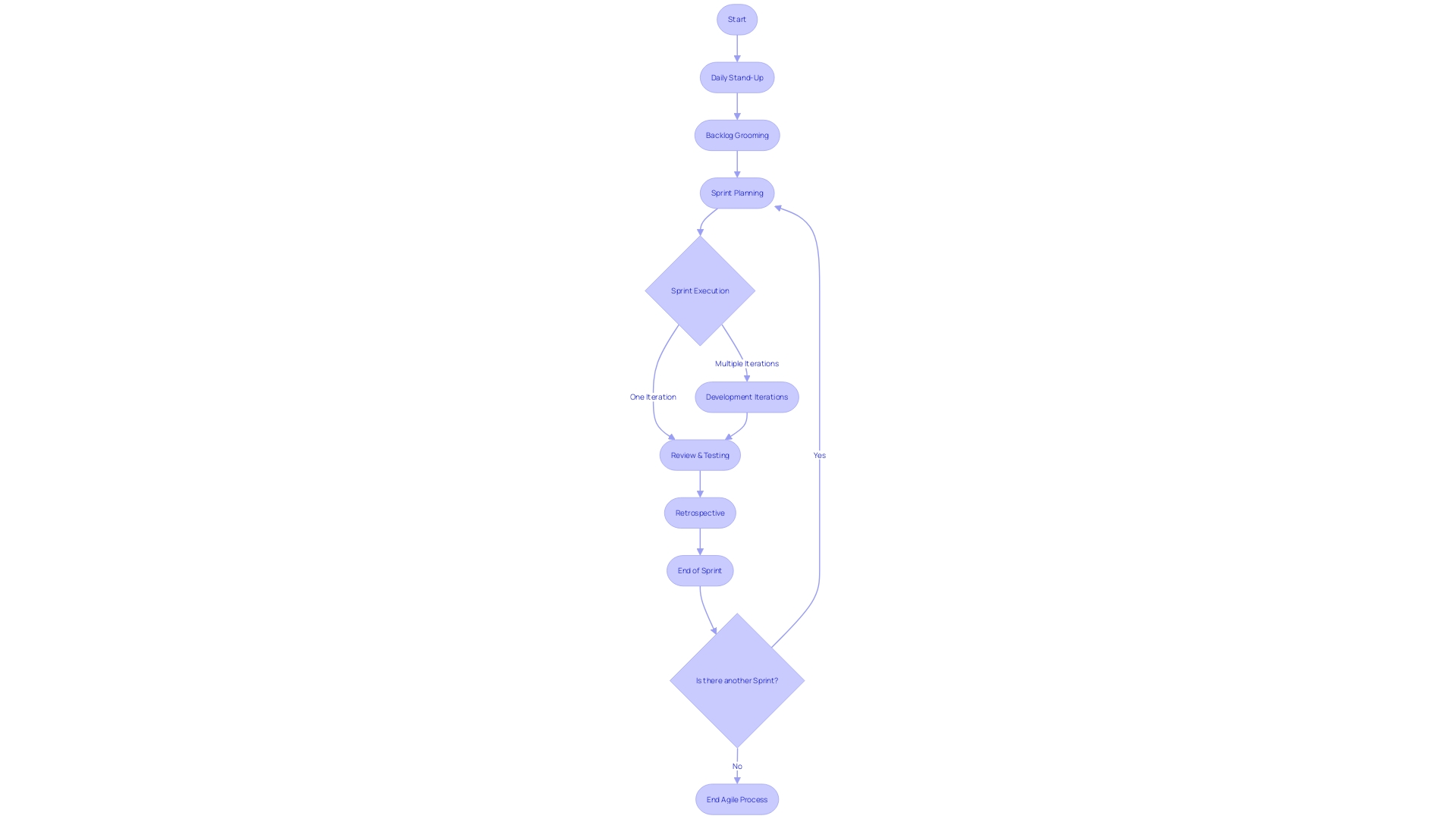
Challenges and Best Practices for Agile Adoption
Agile development, while yielding numerous advantages such as enhanced adaptability and customer-centricity, isn't without its hurdles. Teams often grapple with resistance to the new methodology, a shortfall in stakeholder commitment, and the complex task of projecting timelines. These challenges stem from Agile's fundamental shift from the sequential 'waterfall' approach, which prioritizes extensive planning over flexibility.
Agile, in its essence, embraces iterative progress and promotes close collaboration between developers and stakeholders throughout the project lifecycle.
To mitigate these issues, it's crucial to establish a clear understanding of the problems that Agile aims to address. For instance, if a product risks losing its market share, highlighting this issue with relevant metrics can help in gaining buy-in from skeptics. Adopting Agile necessitates a cultural transformation as much as a procedural one, which is why thorough training and stakeholder engagement are paramount.
This means not only educating teams on Agile practices but also ensuring that stakeholders comprehend the value of their involvement and the Agile ethos of embracing change, even late in the project cycle.
Moreover, the Agile Manifesto, with its 12 principles, venerates working software as the primary measure of progress, advocating for rapid iterations and the capacity to adapt swiftly to change. This approach has revolutionized project management, particularly in smaller firms, though larger organizations tend to face greater challenges in implementation. Regular introspection and adjustments post-sprints are essential to Agile's success, as they allow for continuous improvement and alignment with business needs.
By adhering to these practices and being cognizant of the unique challenges of Agile, organizations can harness its full potential to deliver successful projects.
Conclusion
Agile software development has revolutionized the creation and delivery of software by prioritizing individuals, interactions, and customer collaboration while embracing the inevitability of change. Agile methodologies break down projects into manageable iterations known as sprints, fostering a harmonious alliance between developers and business stakeholders. This approach ensures that the primary measure of progress is working software.
Agile's adaptability, teamwork, and swift response to change have made it indispensable in the current software development landscape. It guides organizations towards efficiency and success, setting new standards in banking software and transforming business models. Despite challenges, Agile's commitment to rapid iterations and collaboration offers a compelling alternative to traditional methodologies.
The Agile Manifesto, with its four core values, prioritizes flexibility, human interactions, working software, and adaptability. It revolutionized software development by emphasizing collaboration with clients throughout the project's life cycle. Agile's relevance extends beyond professional settings, fostering a culture of integrity and well-being.
Built on 12 fundamental principles, Agile promotes iterative development, customer-centricity, and collaboration among cross-functional teams. Daily stand-up meetings monitor progress and facilitate adjustments. Key frameworks like Scrum and Kanban enhance Agile by offering flexible pathways for teams to navigate complex projects and deliver value to customers.
Implementing Agile requires creating cross-functional teams that work in dynamic phases, known as sprints, to iteratively improve processes and results. Continuous improvement culture is essential, increasing the success rate of software projects.
In conclusion, Agile software development's transformative mindset and emphasis on collaboration have revolutionized the creation and delivery of software. Agile methodologies offer adaptability, teamwork, and swift response to change, guiding organizations towards efficiency and success. By implementing Agile principles and practices, teams can navigate complex projects, adapt to change, and deliver high-quality, responsive software that meets the ever-changing needs of users and the market.





